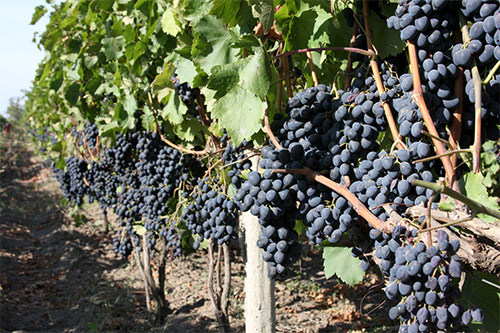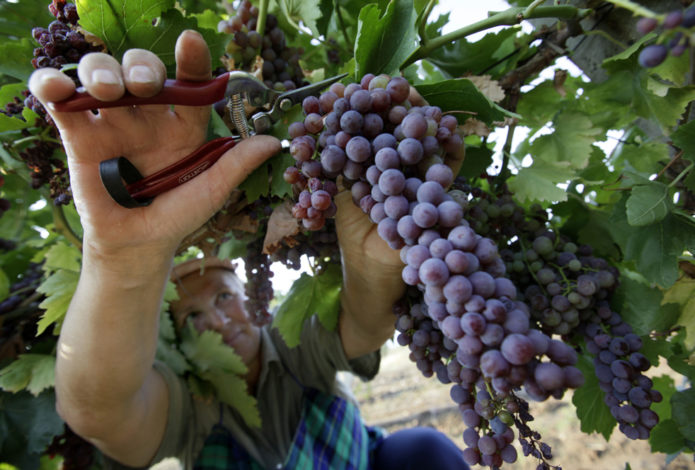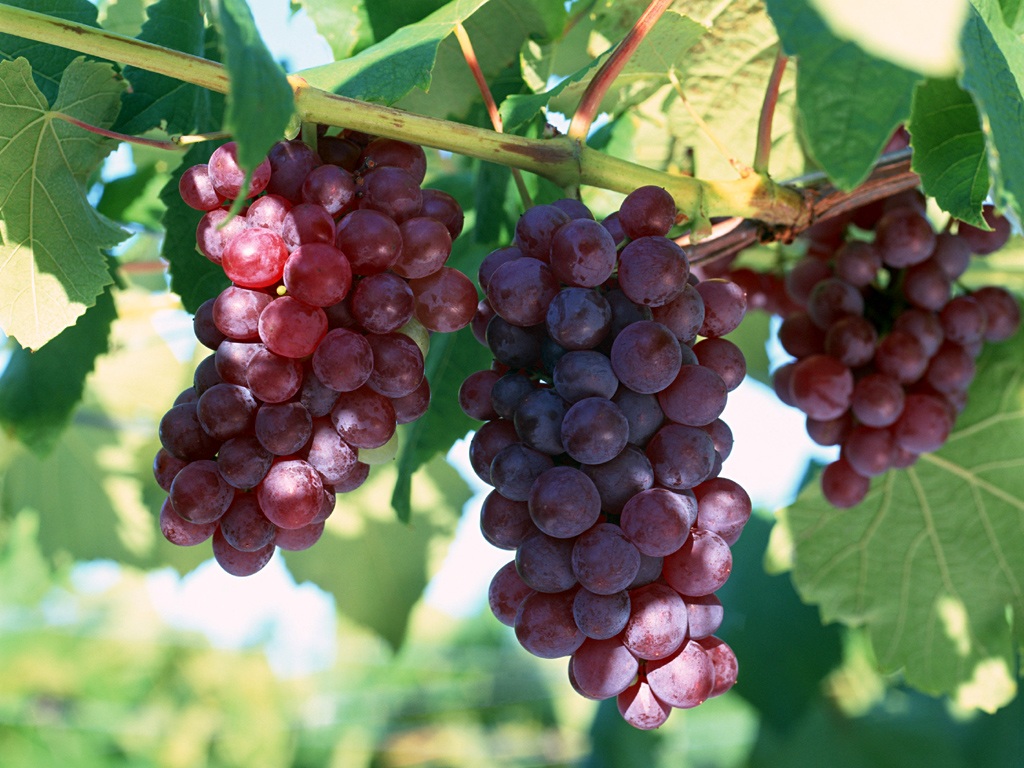Moldova grapes are suitable for cultivation only in the south: in the Krasnodar and Stavropol regions, Crimea, Volgograd and Astrakhan regions and other regions with hot and long summers. The variety is very fruitful, the berries have a harmonious taste, are good fresh and as raw materials for winemaking. Moldova cannot be called capricious, rather, it is a workhorse, but there are some peculiarities of cultivation, and significant ones.
Content
History of grapes Moldova
The origin of this grape can be learned from its name. Bred in the capital of Moldova, the city of Chisinau, by breeders of the local Research Institute of Viticulture and Winemaking. This is a very old variety, an application for its registration in the State Register of Breeding Achievements of the Russian Federation was received in 1974. Since 1986, Moldova has been listed in the State Register as approved for cultivation in only two regions: the North Caucasus and Nizhnevolzhsky.
In industrial and private vineyards in Ukraine, Moldova, Georgia, the south of the Russian Federation, you can find 15-year-old bushes of this variety and older. Their owners are so happy with the shape that they still grow it alongside modern hybrids.
Video: farmers advertise grapes Moldova
The history of viticulture in Moldova goes back thousands of years, grapes have been grown here since time immemorial:https://flowers.bigbadmole.com/en/yagody/vinograd/kak-posadit-vinograd-vesnoy-sazhentsami.html
Description of the variety
The grapes of Moldova are late-ripening, so they need a suitable climate. It begins to ripen in September, the mass harvest is in October, but the berries can hang on the vines for another month and gain sugars. Depending on the region and weather conditions, the ripening period may shift slightly. For example, in Georgia, the first berries of Moldova are enjoyed in the third decade of August.
The variety is distinguished by its great vigor: leaves are large and round, vines are powerful. Each bush requires a lot of space on the site, but this is justified by the high yield. So, in the conditions of Krasnodar, about 300 clusters with an average weight of 500-600 g are collected from an arched bush, consisting of four arms. This is about 150-180 kg per plant! Moldova reaches such a yield by the age of 8.
Moldova's berries are round, dark purple, large, each weighing 4–6 g. Bunches are conical, medium friable, they grow up to 30 cm in length, the maximum weight with good care is 800–1000 g. The State Register says about taste that it is simple and sour. However, winegrowers claim that fully ripe Moldova has a rich sweet and multifaceted taste, worthy of use in winemaking. The pulp is fleshy, the juice yield is about 60%.
The best grape varieties for use in winemaking are:https://flowers.bigbadmole.com/en/yagody/vinograd/sorta-vinograda-dlya-vina.html
Advantages and disadvantages of Moldova grapes (table)
| Benefits | disadvantages |
| Frost-resistant (up to -25 ⁰C), can be grown uncovered, quickly recovers after freezing | Due to the late ripening period in most regions of the Russian Federation does not ripen |
| Resistant to gray mold and mildew | A sparse landing pattern is required |
| Has increased resistance to phylloxera | Requires fertile and well-hydrated soil |
| Due to the late ripening period, it is not affected by wasps | With the classic vertical garter of annual shoots, there is a strong growth of greenery to the detriment of fruiting |
| The berries are distinguished by a beautiful presentation, good keeping quality and transportability. | Competent rationing is necessary: when overloaded, the berries do not ripen, shoots fatten from underload |
| High yielding | In a rainy summer and in regions where fungal diseases are common, preventive spraying from oidium is needed |
| Produces universal fruits |
Features of agricultural technology
The place for the late-ripening variety should be chosen the sunniest. Grape planting scheme varieties Moldova - 4x5 m, when thickening the vines stretch out, the berries become smaller. It would be nice to plant Moldova along a wall or a high solid fence, on the south side, and even better to grow it on a gazebo attached to the house. The procedure for preparing a planting pit depends on the structure and composition of the soil in your area. If this is black soil, then it is enough to dig holes according to the size of the roots of the seedlings and plant. On poor and heavy clayey soils, they dig holes 1x1x1 m and fill them with sod soil, mixed with humus, compost, and peat.
Video: how to make a pit and plant grapes
If you plan to cover the bushes for the winter, then place the seedlings at an angle, tilting to the side where you will lay the vines, and deepen them to the first shoot from the root. Water well (10–20 liters per bush) and mulch the soil.
Caring for Moldova consists of the following steps:
- Watering. Water the grapes once a month (5-6 buckets under a bush), and in dry weather - 2-3 times. Moldova loves moisture, its berries do not crack. When the fruits reach their size, about a week before the start of staining, stop watering.
- Top dressing. Even on black soil in 2-3 years, the bush will take all the nutrients from the coma adjacent to the roots. Next, you need top dressing:
- in the fall, under each bush, add 200-300 g of wood ash and 10-15 kg of humus;
- in the spring, after tying the vines, make a liquid feed from the infusion of mullein (1:10) or bird droppings (1:20), the norm is 2 buckets under a bush;
- during the budding period, scatter 200-300 g of ash under the plant, loosen and water;
- in the growth phase of berries, when they reach the size of peas, it is advisable to feed with microelements, suitable: ash or ready-made complex mixtures for grapes (Chistaya leaf, Novofert, Meister-Agro, etc.).
- Protection from disease. Do not wait for spots of myceliums with spores to appear on the leaves and berries, carry out 1-2 preventive spraying with fungicides: Topaz, Skor, Mikal, Quadris, etc. The first spring treatment can be done on the leaves that have just appeared, and the second after 10 days, but no later than 2 weeks before the beginning of flowering. This is sufficient for healthy bushes. If there are signs of disease, then spray also over pea-sized ovaries. Autumn processing is carried out after the harvest, if the outside temperatures are still positive - at least + 6 ... +10 ⁰C.
- Formation. With a vertical or fan-shaped garter, according to winegrowers, the shoots of Moldova give all the juices "to the sky, not in a bunch." It is necessary to properly load the bush, but do not overdo it. There is an experience of growing bushes in 4 arms with long vines - 10-14 buds each, followed by removal of weak shoots and pinching. In September, minting is done at a height of 2.2 m. On each shoot, one lower bunch is left. All the owners of Moldova are unanimous in one opinion: this grape behaves perfectly in a horizontal arbor culture with long sleeves. In this case, fruiting shoots twine around the horizontal supports and hang down freely. Ripening occurs a week earlier than in the trellis form.However, grapes are difficult to remove and cover from arbors.
- Shelter for the winter. In the Crimea, in the south of the Krasnodar Territory, in Georgia, Moldova is not sheltered for the winter. If in your region there are frosts below -20 ⁰C, then with the onset of cold weather, the vines must be removed from the supports, laid on a dry bed and covered with straw or reeds.
Video: about the yield of Moldova and protection from oidium
Preparations for the treatment of vines from pests and diseases:https://flowers.bigbadmole.com/en/yagody/vinograd/obrabotka-vinograda-osenyu.html
Harvesting and processing
If you have found an approach to this variety, then in the fall it will thank you with a generous harvest. The basic rule of assembly is to cut off the brushes with a stem or even part of the vine, without touching the surface of the berries, so as not to erase the wax layer. It protects fruits from spoilage and is essential in winemaking.
Eating such a quantity of fresh grapes right from the bush will not work. The surplus can be sold or treated to loved ones. For personal consumption, Moldova is processed into wine, blending with other varieties. Excellent chacha is obtained from the squeeze. Berries can be frozen, dried, they make jams and compotes. But the main thing is that the bunches can be kept fresh until February. They are laid out in shallow boxes and taken to the basement or hung in attics. The optimum storage temperature is 0… +7 ⁰C.
Video: how to make wine from Moldova berries
Reviews about grapes Moldova
In the conditions of my site, Moldova turns out to be wonderful. Even in 2008, an unfavorable year for viticulture, there was nothing left for storage - they ate everything. I have experience growing it both on a gazebo and on a trellis. On the trellis, it really matures later, where the strength of growth is greater. For ripening, it must be normalized, because one shoot gives up to 4 inflorescences. I leave the lower inflorescence, remove the rest - so on 3-4 shoots and replace the sterile. I wish you all success in growing Moldova!
I have been growing 2 bushes of moldova for about 20 years. The bushes are multi-stem, every year I take off the sleeves 5-6 m long for the winter and put them on the ground, and in the spring I place them on the arch again. Harvest a decent kg. 30-40 per bush. So far, I have no better grade for long-term storage. Unfortunately, it happens that once in 8-10 years it fails to ripen, but the rest of the years are always with the harvest. I read on the website that some even make wine from this variety, but I have more than a dozen wine varieties for wine, and we use Moldova fresh when there is no other grape.
Moldova is one of my favorite grape varieties. When all the other varieties have already departed, and Moldova is still hanging and happy. Very good late variety. And you can eat juice and wine. Stores well until the New Year. I have only 4 bushes.
My estate near Belgorod. My neighbor on the north side, in violation of all the rules (20cm from the border of my site - for which I am grateful to him), built a garage 18m long and 4m high from red brick. During the day, the wall heats up, at night it gives off heat. 5 bushes of my grapes are doing great. Among them are late ones: Moldova and Rizamat stable. They mature every year. Even this year, after the May (05/07/2014) frosts, Moldova matured and I cut off on 10/02/2014 - 47 bunches from 200 to 500 gr. The bush is 5th year. Landing pit 1X1X1m. At the bottom there is a layer of clay 15cm. The soil is sand. Strong agrophone (humus + sand, soil + ash + mineral fertilizer) Watering from a pond - with warm water.
Moldova was created not only for the southern regions, but also for literate winegrowers. This form gives high yields with good care (watering, feeding, protection from diseases). The variety requires a special approach to the formation of the bush and yield rationing. It is necessary to find the optimal ratio of shoots and bunches in order to properly load the vines and prevent them from fattening.Moreover, this ratio is individual for each site, depending on weather conditions and soil structure.






